Contents
There is no doubt about the popularity of such a horticultural crop as blackberries: this is confidently evidenced by the presence of more than 400 known varieties of the crop. Despite such an abundance, caring for them is not much different, usually it is enough to follow the general rules of agricultural technology. It’s no big deal if planting and growing bushes is planned in the conditions of Siberia – this situation requires a particularly careful approach to choosing a crop variety.
Features of growing blackberries in Siberia
Blackberry is considered a crop vulnerable to severe frosts: its frost resistance is estimated at a maximum of -20 degrees. But even at such temperatures, the bushes must be covered for the winter in order to preserve the shoots and root system. However, cases are widely known when many varieties grow calmly and effectively bear fruit in the Chelyabinsk region without any shelter, where you will not surprise anyone with a 30-degree frost in winter. But still, the best results are obtained by those gardeners who cover the bushes.
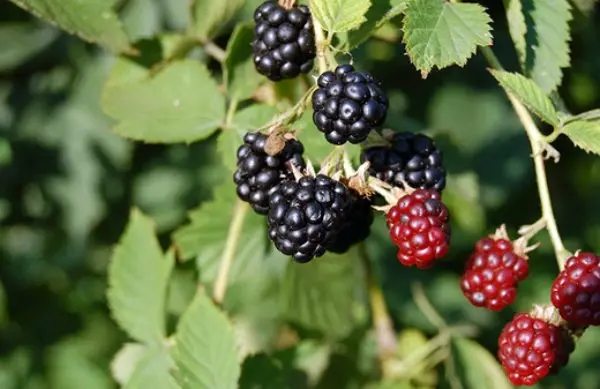
In order for the blackberry to bear fruit well, the planting of the bushes should be carried out in well-lit places warmed up by the stingy Siberian sun, which will be maximally protected from cold winds. To enable the plants to get a little stronger and take root, planting should be done in the spring, then by winter the plants will gain enough strength to go for the winter: this is the only way you can protect your culture from freezing.
When choosing a blackberry variety, pay special attention to its winter hardiness. For Siberia, it is better to take varieties “Snyder” or “Eldorado”. A variety such as “Eri” has also proven itself well.
Preparing for planting
Blackberries, which will grow in Siberia, with its harsh living conditions, must receive proper care from the farmer, moreover, they must be planted in the right place. The selected site must meet the following requirements:
- lack of heavily shaded areas;
- sufficient amount of sunlight;
- the soil of the selected site should not be excessively moist or even swampy;
- sandy soil should not prevail.
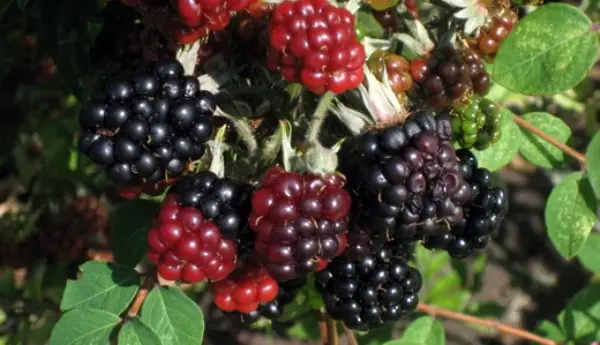
As already mentioned, in the northern regions it is preferable to plant all varieties of blackberries in the spring. Before planting is carried out, the site should be carefully prepared: exterminate perennial weeds, remove all rhizomes from the soil, dig the soil with high quality (keeping to the depth of the bayonet of an ordinary shovel).
Mineral fertilizers mixed with organic fertilizers must be applied to the ground in the area where blackberry cultivation is planned: at least 1 kg of humus, 10 g of potassium sulfate, 20 g of superphosphate will be needed per 15 square meter of planting area.
Landing technology
When planting bushes of a variety suitable for Siberia, the holes must be located at a distance of at least one and a half meters from each other, keeping 2,5–3 m between rows. The root system of blackberries, regardless of which variety it represents, lies somewhat deeper than the same raspberry. Therefore, the landing pits must be made large and deep – best of all 0,5 * 0,5 m. The holes must be prepared 10 days before the landing takes place.
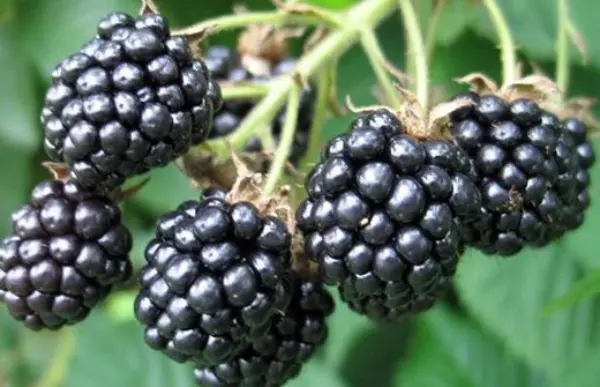
It is better to plant bushes vertically, slightly deepening the root collar (no more than 2–3 cm). If this condition is not met, then even the most careful care will not bring the expected results – the development of the bush will be inhibited.
As soon as the blackberry is planted, a hole is made around the plant and the seedlings are watered abundantly (at the rate of 1 bucket of water for 2 bushes). The next step is to mulch the soil around the seedling.
When all the necessary manipulations are done, blackberry seedlings, regardless of variety, need pruning. On each shoot, leave no more than 5 cm above the soil, decisively cut the rest.
Thinness of care
During the spring and summer that will pass after planting the bush, it will give several strong shoots. Any blackberry variety suitable for growing in Siberia needs proper care: regular loosening of the soil was carried out not only in rows, but even between rows, two-year-old shoots that had fruited were cut off, a shelter was organized for wintering in autumn, as well as a timely rise to supports with the arrival of spring.
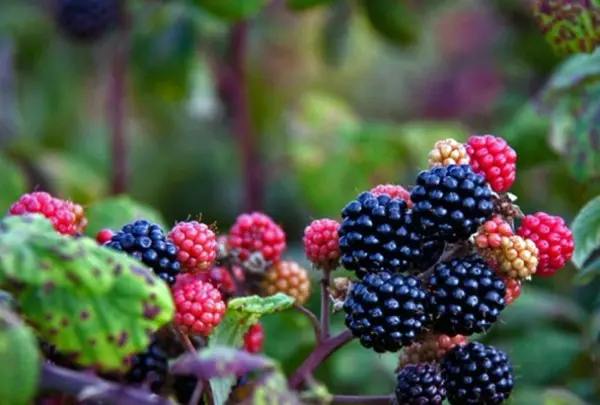
An adult plant (the variety in this case is not of fundamental importance) needs annual spring top dressing: 25 g of urea is applied for each square meter of planting area, and once every three years, 10 kg of humus for each blackberry bush.
Blackberry care also includes the obligatory rise of shoots to the trellis.
No matter what variety of blackberries you have in your garden, they require adequate watering. Do not allow the soil to dry out too much, especially during active flowering or fruiting, the bush will not like it. In the first few years of the bush’s life, it is watered fan-shaped, lifting and tying the growing lashes. All subsequent young shoots are directed to the center of the bush.
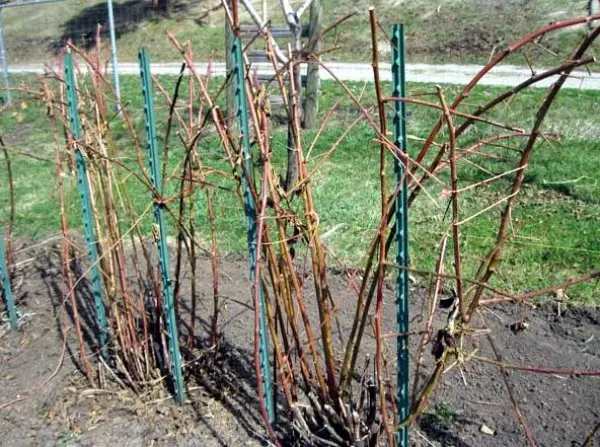
In the fall, when fruiting is over, it will be necessary to provide not so much care as preparation of the bush for winter: we cut off all the old lashes cleanly, and carefully place the young shoots in a small pre-dug trench to make it easier to organize shelter. Bushes are covered with a protective layer of suitable material, sometimes leaves, sawdust or spruce branches are used. Without following these rules, plants of a non-hardy variety are unlikely to survive the harsh Siberian winter.
It should be noted that experienced “blackberry growers” advise observing the rule of crop shelter, regardless of the resistance of the selected variety to frost: even a variety that is officially considered hardy for lowering temperatures to -20 degrees very often suffers from frost, resulting in reduced bush yield.
So, you provided your bushes with decent care, and they successfully spent the winter under a reliable protective layer. But the cold has passed, and now the time has come for the first spring work in the garden. What is the first thing a gardener does? Of course, he frees his blackberry from winter shelter. This must be done even before the buds swell on the lashes, and winter-hardy varieties wake up early enough. In principle, all subsequent care for the blackberry bush is to give it a shape and timely lift the growing branches to the trellis. And so on until the time comes to harvest.
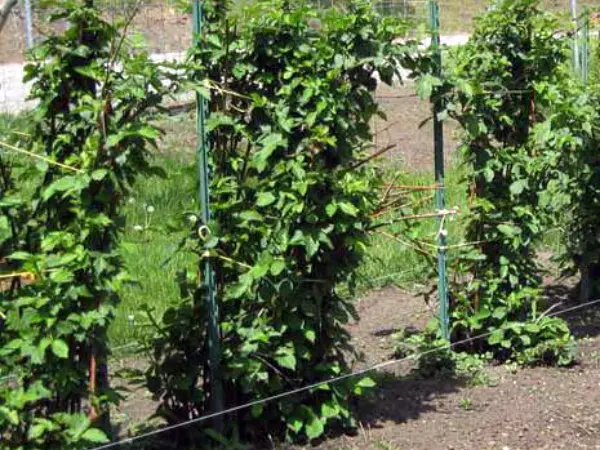
Blackberry bushes, even if they are of the same variety, do not bear fruit at the same time. Fruits need to be collected in several approaches as they ripen. If the berry is ripe, then it easily and effortlessly comes off the cup.
Harvesting is often associated with great difficulties – blackberries have a “prickly” character. Each variety of berry, in addition to its taste and features of agricultural technology, also differs in the number of thorns, but still, there are a lot of such thorns. Recently, however, varieties have appeared that delight us with absolutely smooth stems, without a single thorn. A variety such as, for example, “Thornfree”, has excellent qualities and is certainly suitable for growing in Siberian gardens, the only condition is that one should not forget about winter shelter.
As you can see, there is nothing difficult or impossible in the process of growing blackberry bushes, even in the difficult conditions of Siberia. Cast aside doubts, and be sure to make the blackberry a permanent inhabitant of your garden, and she will never be in debt, generously thanking you with her tasty and healthy gifts.
Video “Harvest blackberry”
Thanks to this video, you will learn which varieties of blackberries are successfully grown in the garden plots of Siberia, what are the features of crop care.









